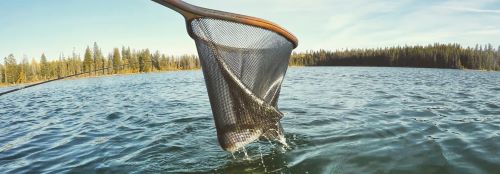The literally thousands of small lakes in the Interior of B.C. are well-known to both resident and travelling anglers as offering some of the world’s best stillwater fishing for rainbow and brook trout. A combination of nutrient-rich water, long open-water growing seasons, and abundant invertebrate life allow provincial fisheries managers to create a diversity of small-lake fishing experiences.
The backbone of a trout’s invertebrate food sources in these lakes is freshwater shrimp, or scuds. Rainbows and brookies that consume a steady diet of freshwater shrimp will have an appealing, deep-orange flesh and rich flavour.
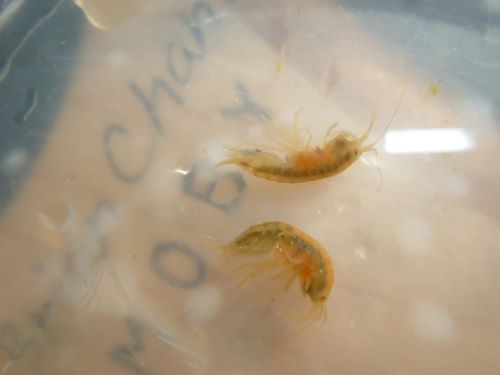
Two species of shrimp are found in our productive lakes. Gammarus are the most widely distributed and easily recognized, as they can reach body lengths in excess of 15 millimetres (about 3/5 inch). They are found in a variety of colours, with light to dark olive the most common. Hyalella are much smaller shrimp that rarely exceed four millimetres (less than 1/5 inch) in length and are typically much lighter in colour, with a pale olive-green to light grey predominant.
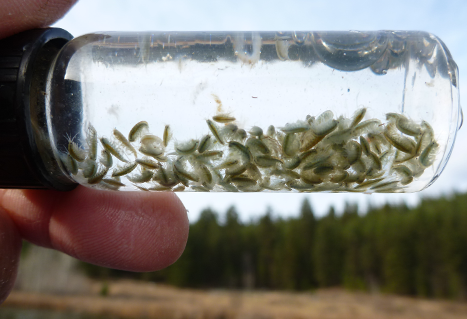
Preferred Habitat
These freshwater cousins of crabs and lobsters thrive in lakes with high levels of dissolved calcium, which is necessary for the development and maintenance of their chitinous exoskeletons. Shrimp feed on the abundant aquatic plant life found growing in the shallows of lakes. The preferred habitat of Gammarus is the dense mats of submerged vegetation that grow on and off a lake’s shallow or shoal areas. Hyalella prefer burying themselves in the marl-covered bottom areas of shoals. Marl looks like a yellowish to white sand, but is actually a layer of calcium-laden particles that has settled onto the lake bottom.
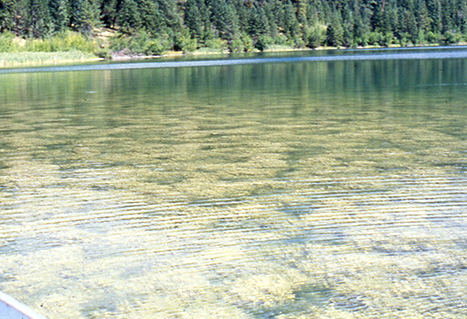
Shrimp are able to reproduce multiple times a year. Hyalella females have as many as 15 broods of offspring, while Gammarus typically have one or two broods each open-water season. Both species can be found inhabiting the same lake.
The density of shrimp populations is directly related to the numbers of fish that predate on them. In fishless lakes, shrimp can often seen swimming throughout the entire water column. In most stocked lakes, though, they will avoid predators by hiding amongst the benthic vegetation, or under rocks and woody debris.
Retrieve Techniques
Shrimp possess multiple pairs of thoracic legs, which typically propel them through the water in erratic 15- to 25-centimetre (six- to 10-inch) bursts followed by a short pause. Trout and char that see a fleeing shrimp will quickly chase it down. An effective retrieve to imitate such movement is to make a series of short but fast 10- to 15-centimetre-long (four- to six-inch) strips interspersed with regular pauses.
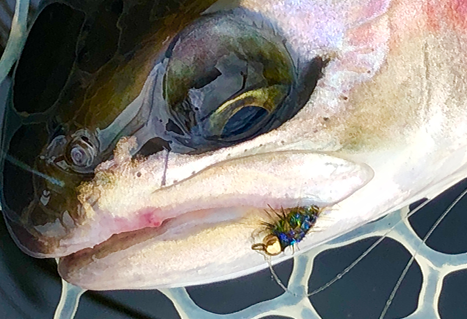
Fly-Fishing Tactics: Sinking Line
Throughout most of the year, catching fish on shrimp imitations means presenting your fly close to the lake bottom where the majority of the real ones are living. This typically means using sinking fly lines of various densities or sink-rates that can cover depths ranging from a metre or so to as deep as six metres (three to as much as 20 feet). Sinking fly lines are rated from Type 1 through Type 8: the number indicates the number of inches per second that the fly line sinks. That would mean a type 3 line sinks at about seven centimetres (three inches) per secod, which equates to about 4.5 metres (15 feet) in one minute.
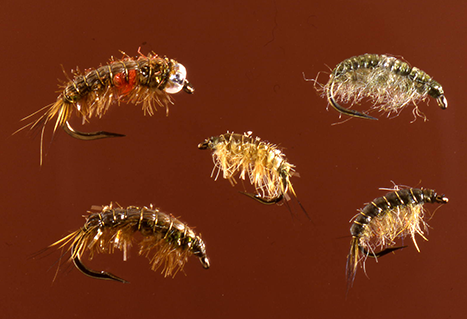
Fly-Fishing Tactics: Floating Line
In the very late fall, fish will often feed on shrimp in extremely shallow water, sometimes in depths of less than 1.5 metres (five feet). In this situation, casting and retrieving bead-headed or weighted shrimp patterns using a floating fly line can be very effective. Again, use a fast but short strip-retrieve to get the attention of aggressively feeding fish.
Timing
Trout are able to feed on shrimp throughout the year which, at times, can make it challenging to catch fish on shrimp fly imitations. Overall, the best times of the season to fish shrimp are in the early spring and late fall when there are fewer food choices, and trout are feeding in shallow water. Make sure you have a selection of shrimp patterns in your fly box before your next trip to the Interior. Trout and char are opportunistic feeders; they don’t often pass up a well-presented imitation of this important food source.
Author: Brian Chan, Freshwater Fisheries Society of BC ambassador
Banner photo: Brent Gill
